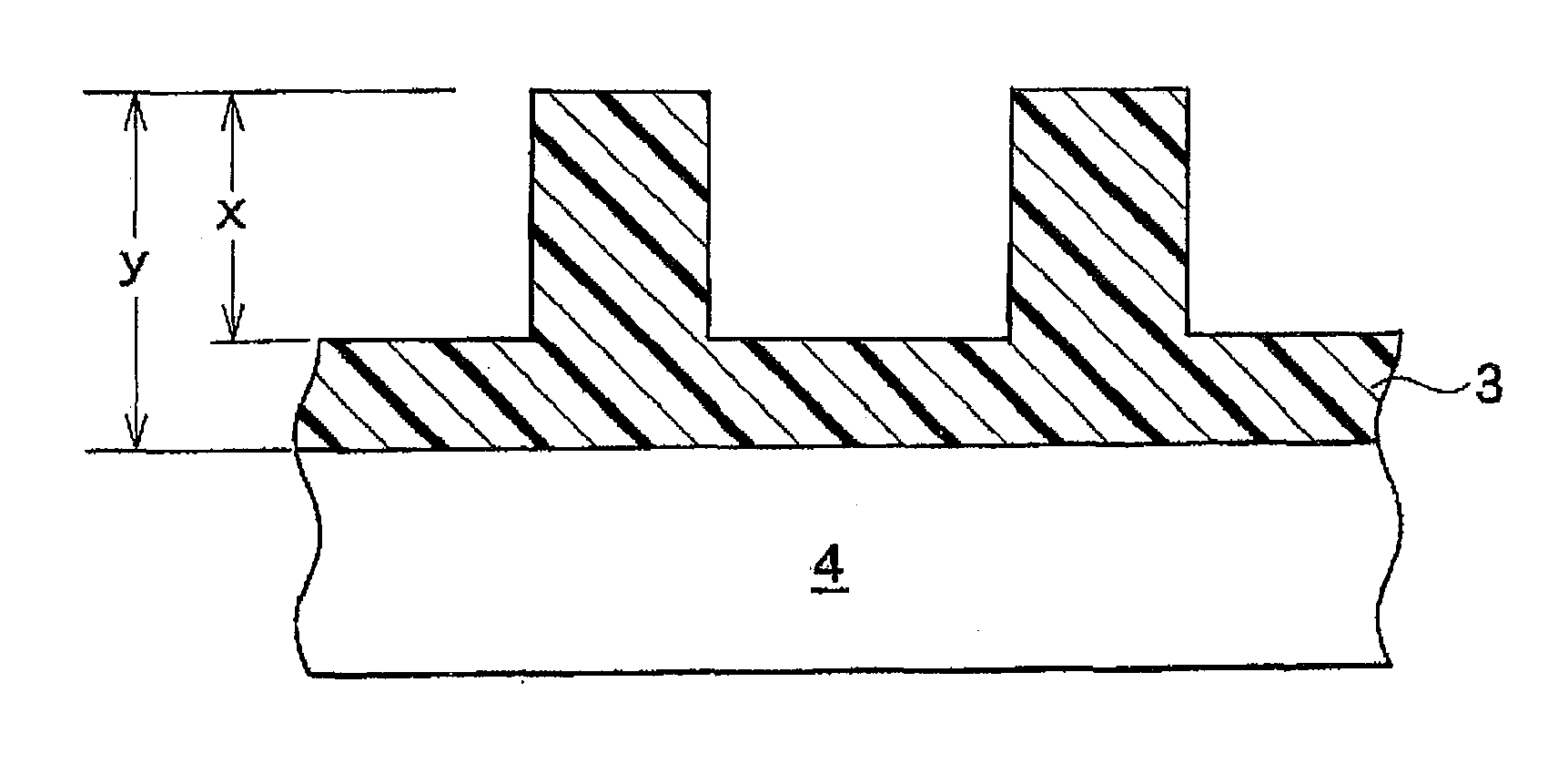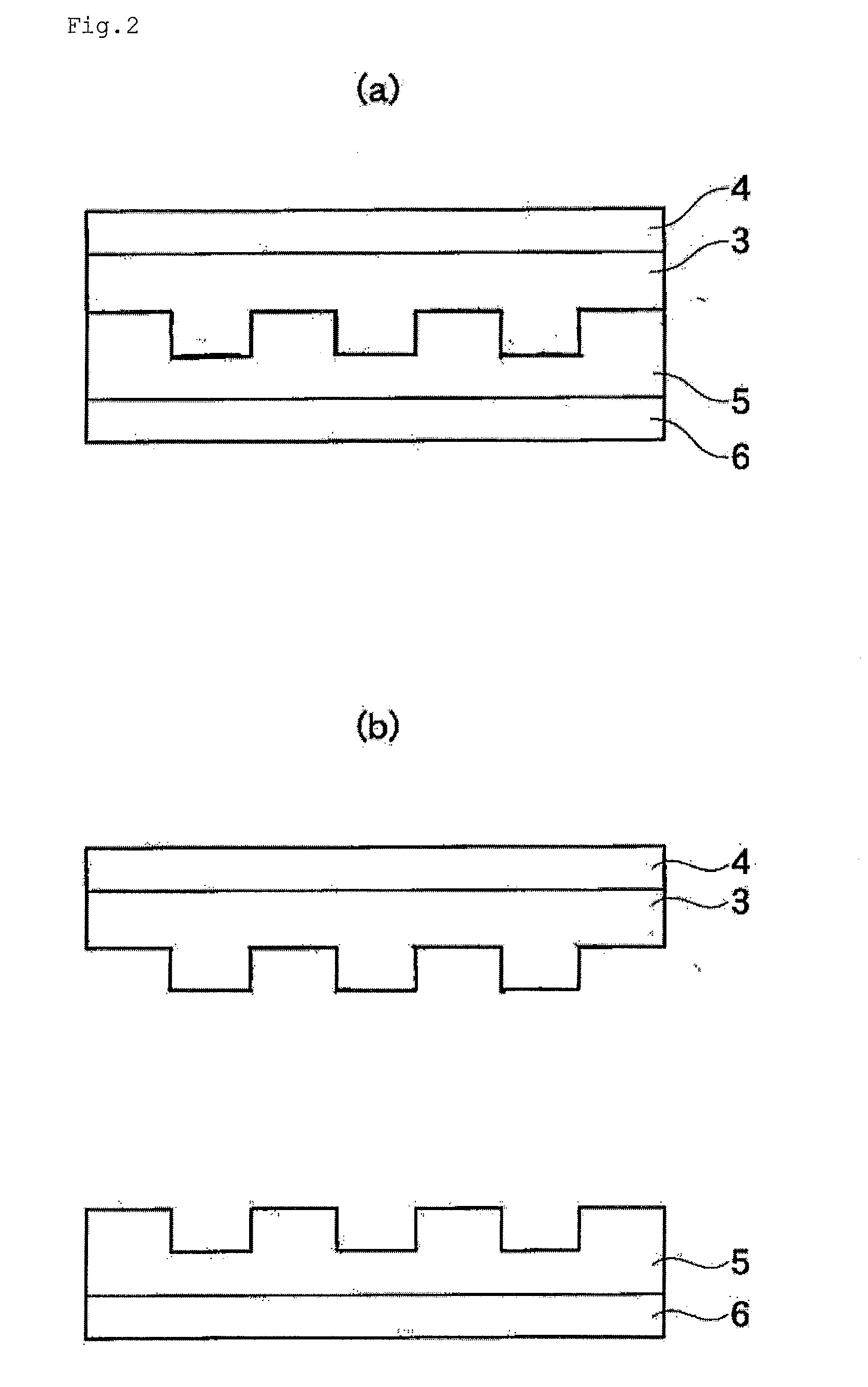Resin Mold for Nanoimprinting
- Summary
- Abstract
- Description
- Claims
- Application Information
AI Technical Summary
Benefits of technology
Problems solved by technology
Method used
Image
Examples
example 1
[0101](1) Preparation of Resin
[0102]In a flask equipped with a stirring device, a nitrogen gas introducing pipe, a thermometer and a reflux condenser, 80 parts by weight of methyl methacrylate (trade name: Light Ester M, manufactured by Kyoeisha Chemical Co., Ltd.), 20 parts by weight of a silicone macromer FM-0711 (molecular weight: 1000) (trade name: Silaplane FM-0711, manufactured by Chisso Corporation) and 100 parts by weight of toluene were placed. This silicone macromer FM-0711 is a monofunctional silicone-based macromonomer having a methyl methacrylate group at one end of molecule, and has a constitution in which a large number of silicone-based units from the end methyl methacrylate groups are bonded through siloxane bonds.
[0103]Thereafter, the contents in the flask were heated to 80° C. while introducing nitrogen gas into the flask at a rate of 0.3 liter / min. Then, 0.5 part by weight of dimethyl-2,2′-azobis(2-methyl propionate) (trade name: V-601, manufactured by Wako Pure ...
example 2
[0121]A resin mold for nanoimprinting was prepared in the same manner as in Example 1, except that 99 parts by weight of methyl methacrylate and 1 part by weight of a silicone macromer FM-0711 (molecular weight: 1000) were used instead of 80 parts by weight of methyl methacrylate and 20 parts by weight of a silicone macromer FM-0711 (molecular weight: 1000) in the step (1) of Example 1.
[0122]Using the resulting resin mold for nanoimprinting, continuous photo nanoimprinting of 20 shots was carried out in the same manner as in Example 1.
[0123]The resulting resin mold for nanoimprinting and the nanoimprinting results are set forth in Table 1.
example 3
[0124]A resin mold for nanoimprinting was prepared in the same manner as in Example 1, except that 51 parts by weight of methyl methacrylate and 49 parts by weight of a silicone macromer FM-0711 (molecular weight: 1000) were used instead of 80 parts by weight of methyl methacrylate and 20 parts by weight of a silicone macromer FM-0711 (molecular weight: 1000) in the step (1) of Example 1.
[0125]Using the resulting resin mold for nanoimprinting, continuous photo nanoimprinting of 20 shots was carried out in the same manner as in Example 1.
[0126]The resulting resin mold for nanoimprinting and the nanoimprinting results are set forth in Table 1.
PUM
| Property | Measurement | Unit |
|---|---|---|
| Percent by mass | aaaaa | aaaaa |
| Percent by mass | aaaaa | aaaaa |
| Nanoscale particle size | aaaaa | aaaaa |
Abstract
Description
Claims
Application Information
 Login to View More
Login to View More - R&D
- Intellectual Property
- Life Sciences
- Materials
- Tech Scout
- Unparalleled Data Quality
- Higher Quality Content
- 60% Fewer Hallucinations
Browse by: Latest US Patents, China's latest patents, Technical Efficacy Thesaurus, Application Domain, Technology Topic, Popular Technical Reports.
© 2025 PatSnap. All rights reserved.Legal|Privacy policy|Modern Slavery Act Transparency Statement|Sitemap|About US| Contact US: help@patsnap.com



